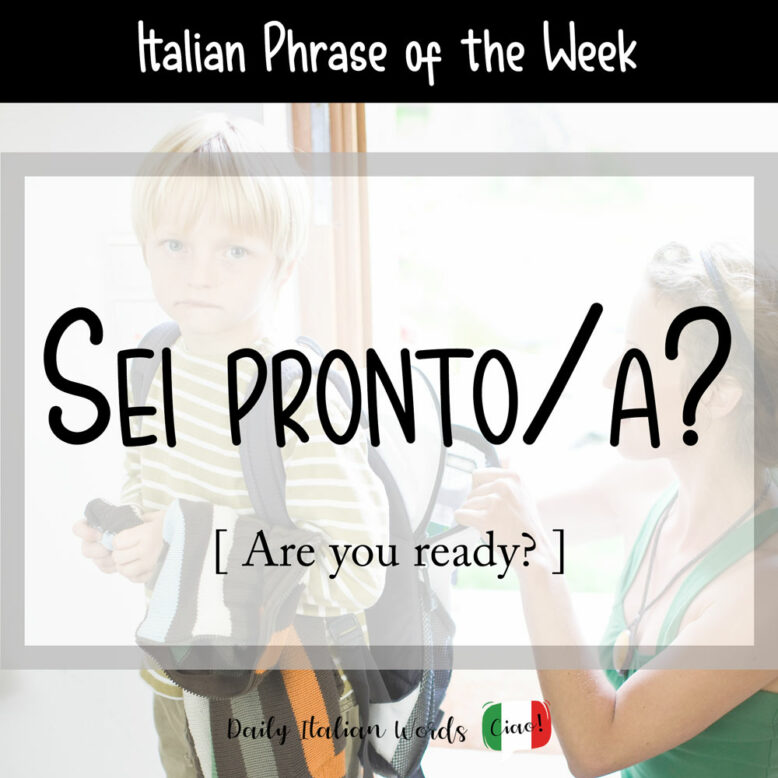If you want to ask someone if they are ready in Italian, you can use the phrases Sei pronto? for a man or Sei pronta? for a woman.
Sei pronto? Sei pronta?
Are you ready?

The respective plurals are Siete pronti? (for men or mixed groups) and Siete pronte? (for women).
As you’ve probably surmised, sei is the second-person present conjugation of the verb essere meaning to be, whereas siete is the second-person plural. Both translate as “you are” in English. Keep in mind that there is no need to include the subject pronoun tu/voi (you/all of you), as the subject is evident from the conjugation.
Se siete pronti, possiamo cominciare la lezione adesso.
If you are ready, we can begin the class now.
Because pronto is an adjective that ends in -o, the ending tells you whether the subject is masculine, feminine, singular or plural.
- pronto = masculine singular
- pronta = feminine singular
- pronti = masculine plural
- pronte = feminine plural

There are a few possible responses to this phrase including:
- Sì, sono pronto / pronta. = Yes, I’m ready.
- No, non sono pronto / pronta. = No, I’m not ready.
- Sono prontissimo / prontissima. = I’m all ready.
- Sì, sono quasi pronto / pronta. = I’m almost ready.
Sei pronto? – Sì, sono quasi pronto. Devo solo andare un attimo in bagno.
Are you ready? – Yes, I’m almost ready. I just need to go to the bathroom for a second.
Heather Broster is a graduate with honours in linguistics from the University of Western Ontario. She is an aspiring polyglot, proficient in English and Italian, as well as Japanese, Welsh, and French to varying degrees of fluency. Originally from Toronto, Heather has resided in various countries, notably Italy for a period of six years. Her primary focus lies in the fields of language acquisition, education, and bilingual instruction.


